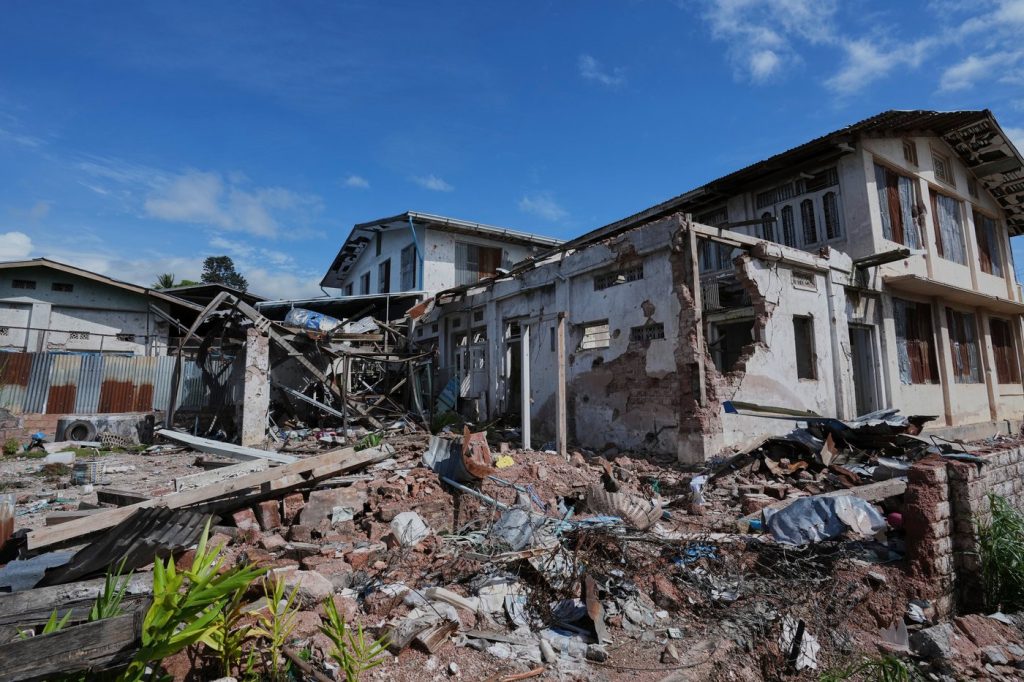KYAUKME, Myanmar (AP) – The town of Kyaukme, located in Myanmar's Shan State, has been severely impacted by the ongoing civil war in the country, which has taken a heavy toll on infrastructure and civilian life. This region is of strategic importance as it serves as a crucial junction on the trading route to China, making it a target for militarized conflict. Since the military coup in February 2021, the town has witnessed significant turmoil and has changed hands multiple times.
The military government regained control of Kyaukme on October 1, 2023, following an initial capture by an ethnic minority guerrilla group known as the Ta'ang National Liberation Army (TNLA) in August of the previous year. This recapture represents a notable achievement for the military, which has been struggling for territory against various resistance groups that have gained traction across Myanmar.
Access for foreign media to the region has been exceptionally limited, with the military strictly controlling the flow of information. An Associated Press photographer was permitted to accompany a trip overseen by pro-military Myanmar media, making it one of the rare opportunities for international reporting in the area. Independent journalism is heavily restricted, as the military government does not allow free press and outright bars journalists from entering conflict zones on their own.
On October 10, 2025, the AP photographer documented the aftermath of the conflicts in Kyaukme. Images captured during this supervised trip reveal grave destruction throughout the town. Damaged residences and infrastructure are prevalent, indicating the extent of the violence and ongoing military operations. Noteworthy images include an exploded ordnance lying on the ground, a damaged fire engine at the local Fire Service Department, and soldiers patrolling roads and checkpoints.
Daily life for locals appears disrupted, with individuals seen riding motorbikes under the watchful eyes of military personnel, demonstrating the tense atmosphere lingering in the area. The presence of soldiers continues as they maintain checkpoints throughout Kyaukme, ensuring a strong military presence in the town's streets. Reports highlight the fragile nature of security in the region, with a focus on controlling movements and keeping the population in check.
Furthermore, some government buildings, such as offices and police stations, exhibit signs of damage, reflecting the town's tumultuous history over the past years. Items belonging to the TNLA, such as uniforms found in police facilities, serve as remnants of the former control held by the guerrilla group. This suggests a complex and fluctuating power dynamic in the area where local governance unsettles owing to the war's intensification.
The conflict in Kyaukme has not only taken a physical toll on the infrastructure but has also deeply affected the local population. Civilians are navigating daily challenges as they seek to resume normalcy amidst a landscape riddled with reminders of violence and instability.
The situation in Kyaukme serves as a stark representation of the broader conflict in Myanmar, where civil war continues to redefine lives, structures, and communities. The changing control of the town highlights the unpredictable nature of the conflict as both waves of military action and guerrilla responses sway the balance of power. As the civil strife persists, the humanitarian and infrastructural impacts will likely continue to unfold.










